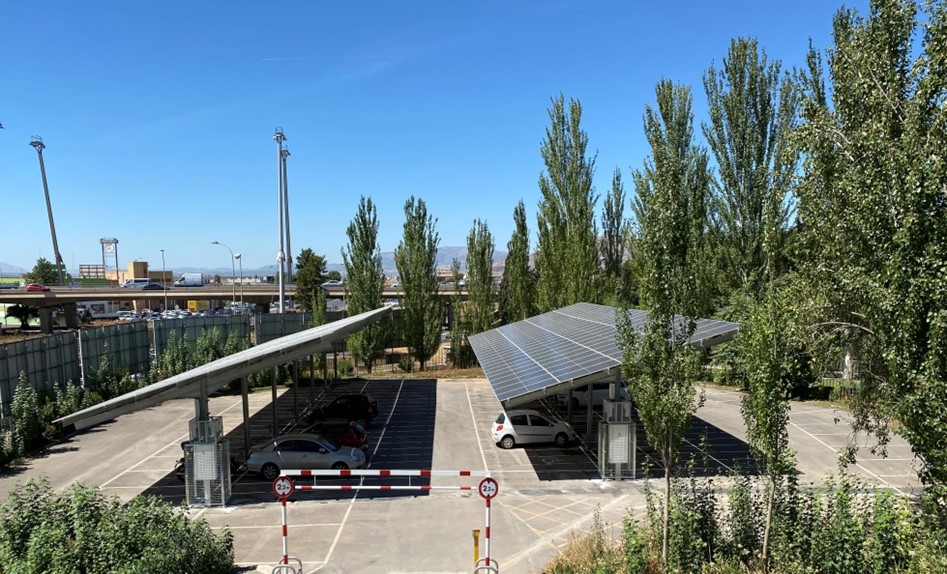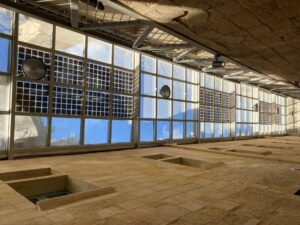Integrated Photovoltaics
INTEGRATED
GREEN URBANISM RELATED
TO ENERGY CONSUMPTION

Image source: Owned by DPG partner. PV facilities in its parking lot.
Introduction
Building integrated PVs (BIPV) is defined by the use of different PV technologies to integrate the production of electricity in our buildings, facilities and cities in a way their visual and economic impact is diminished. This way, BIPV makes it possible to produce electricity inside the city from solar energy, even in protected and/or touristic areas.
Description
Integrated photovoltaic solar energy in buildings consists of the use of photovoltaic (PV) modules as part of the structure of a building to replace conventional construction materials such as roof coverings, skylights or facades. Photovoltaic modules are better to be incorporated in the phases of design and construction of new buildings, although existing buildings can also be retrofitted with installing PV panels.
An advantage of integrating photovoltaic systems initially is that the final cost can be compensated by the reduction in spending on conventional construction materials that would have been used. These advantages are making the photovoltaic industry grow in the cities.
Some of the possible technologies to achieve BIPV are transparent PV, PV glazing, PV tiles, opaque passable PV materials, flexible PV, hidden PV, or sun shading PV facilities.
Most of the main cities in Europe have protected cultural heritage areas, or touristic neighbourhoods, and regular PV is not allowed even if most of the citizens live in those areas. BIPV can be the perfect solution in these areas.

Main Features
- Possible to be installed in touristic and cultural heritage protected areas.
- Saving in construction materials.
- Low visual impact.
- Integration of solar energy in cities.
- Multiple possibilities and materials.

Image source: Owned by DPG partner. PV facilities in Malta JST of GREENVOLVE.
Advantages and challenges
+ It has been proved and recognized that building integrated photovoltaics have the potential to become a major source of renewable energy in the urban environment. Buildings and all citizens’ energy installations have an enormous impact on environment.
+ Visual impact caused by conventional electrical network is greatly avoided.
+ Replacement of conventional building materials by solar panels is amortized considering the cost of building with classic materials added to the energy savings thanks to photovoltaic panels.
+ Citizen acceptance of BIPV in touristic and protected areas.
– Generally speaking, BIPV is more expensive than regular PV.
– There are not so many companies that work in this field.
– More knowledge about this possibility is required at cultural heritage and tourist management boards to be able to allow it.

